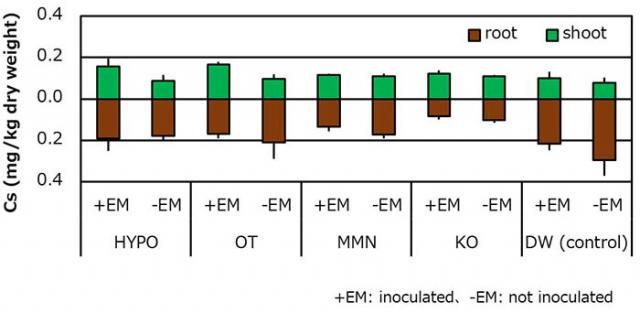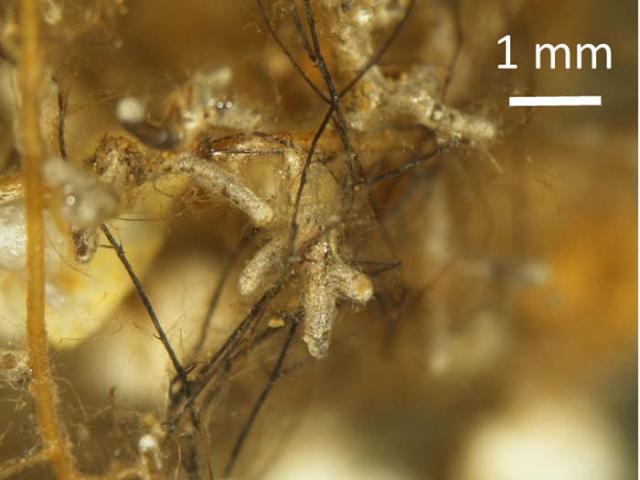Home > Research > Research Results > Research Results 2019 > Ectomycorrhizal fungi influence cesium uptake by trees
Update:March 19, 2019
Main content starts here.
Ectomycorrhizal fungi influence cesium uptake by trees
| Article title |
Influence of ectomycorrhizal colonization on cesium uptake by Pinus densiflora seedlings |
|---|---|
| Author (affiliation) |
Sumika Ogo (a), Takashi Yamanaka (b), Keiko Akama (a), Junko Nagakura (c) & Keiko Yamaji (d) (a) Department of Mushroom Science and Forest Microbiology, FFPRI, Tsukuba, Ibaraki, Japan. (b) Principal Research Director (Biological Function and Biotechnology), FFPRI, Tsukuba, Ibaraki, Japan. (c) Department of Forest Soils, FFPRI, Tsukuba, Ibaraki, Japan. (d) Tsukuba University, Tsukuba, Ibaraki, Japan. |
| Publication Journal |
Mycobiology, Taylar & Fransis, 46(4), 388-395, 2018 DOI:10.1080/12298093.2018.1538074( External link ) |
| Content introduction |
Seven years after the Fukushima Daiichi nuclear disaster in March 2011, many of the radioactive substances that were dispersed to woodlands have now distributed in surface soils. To predict future distribution patterns of radioactive substances, it is essential to elucidate the uptake pattern of radioactive cesium (137Cs), which has a long half-life in soil, by trees via their roots. Tree roots are commonly infected by ectomycorrhizal fungi that efficiently absorb minerals from the soil and supply them to the tree. Therefore, ectomycorrhizal fungi are likely to influence radioactive cesium uptake by trees. We inoculated red pine (Pinus densiflora) seedlings with Astraeus hygrometricus, an ectomycorrhizal fungus, and measured cesium content in individual parts of the tree. We found that colonization with A. hygrometricus (Photograph 1) led to a significant increase in cesium concentration in the shoots (Fig. 1); however, cesium concentration in the roots showed no significant change following fungal inoculation. Cesium uptake is likely to be affected by of nutrient conditions of the soil as well as the species of the ectomycorrhizal fungus and tree. Therefore in the present study, we grew red pine seedlings infected by ectomycorrhizal fungi in different media; however, no obvious differences were observed in cesium uptake. Moreover, the ionic form of potassium has similar uptake behavior as that of cesium ion, a monovalent cation. Also, in the present study, colonization with A. hygrometricus increased potassium uptake by the trees. Therefore, our future studies will aim to clarify the role of ectomycorrhizal fungi in cesium uptake by various species trees infected by various ectomycorrhizal fungi.
Figure 1. Cesium (Cs) concentration in the shoots and roots of Pinus densiflora seedlings after inoculated with Astraeus hygrometricus. +EM: seedlings inoculated with A. hygrometricus; -EM: seedlings not inoculated with A. hygrometricus; HYPO: Hyponex liquid medium; OT: Ohta liquid medium; MMN: Modified Melin–Norkrans liquid medium; KO: Kawai–Ogawa liquid medium; DW: Distilled water as a control. Mycorrhizal inoculation led to a significant increase of cesium content in the above-ground parts of the seedlings.
|
Copyright © Forest Research and Management Organization. All rights reserved.


